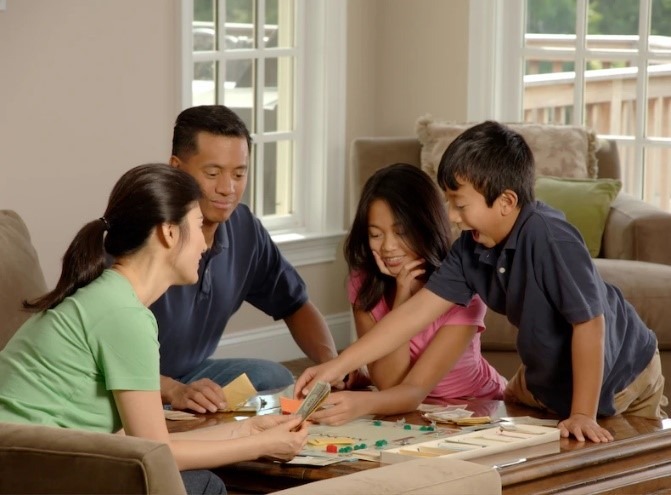Teaching numbers to children is as easy as 1, 2, 3! Children learn best through play and hands-on involvement. Therefore, teaching numbers, like any other skill, should be interactive and fun.
Below we’ve compiled a handful of fun, playful activities to teach numbers to young children.
Fingerplays & Songs
Fingerplays and songs are fantastic ways to teach children number concepts. Many finger plays involve numbers and counting. Fingerplays and songs also involve literacy, rhyming, rhythm, and language, so children learn multiple concepts simultaneously!
Check out this list of fingerplays to try in your classroom!
Dice Exercise
Large foam dice are an excellent classroom resource that teachers can use for multiple math activities. For example, using the dice for an exercise game combines physical movement and mathematics. For younger children (2-3 years old), use one dice; for older children (4-6), use both.

Roll the dice and call out an exercise—jumping jacks, jogging in place, arm circles, etc. The number on the dice is the number of times you should perform the exercise.
Have the children take turns rolling out the dice and calling out the numbers.
Match the Number
Match the number games come in all shapes and sizes and are easy to create with classroom materials you already have!
Example 1: Use an empty ice cube tray and write a number at the bottom of each well of the tray. Provide the children with manipulatives like buttons or beads to add to the tray.
Example 2: On a piece of paper, write the number (three), show the numeral (3), and include a group of objects that match the number (3 butterflies). Create one of these for the numbers 1-10 and laminate them. Provide children with manipulatives and dry-erase markers to practice writing and interacting with numbers in different forms.
You can also purchase pre-printed sets.

Example 3: Match cards help cement that the numeral and the quantity of a number go together. You can create match cards on your own or purchase them. One half of the card should have the numeral, and the other should have the corresponding number represented by objects. The objects can be anything, frogs, cakes, rocket ships, boats, etc. For an added level of learning, write the name of the number on the backside of the card.
Board Games
Playing board games is a fun way to teach children counting and numbers. Whether it is a game like Candy Land that involves colors, patterns, and counting or a game like Shoots and Ladders that involves visual recognition of a number on the spinner and counting, children are picking up valuable numerical concepts.

In addition, board games teach patience, good sportsmanship, and that losing is ok sometimes.
Number Wheel
A number wheel is a twist on the number match game that develops a child’s fine motor skills. Using a piece of cardstock or a paper plate, create a pie. Each slice should have the number of dots you want the slice to represent. For example, the first slice would have one dot, the second two, etc. For younger kids, use ten or fewer slices; for children five and older, you can create wheels of 12, 15, or 20 slices.

On clothespins, attach the numbers that correspond with your pie. Children then open and close the clothespin to attach it to the correct spot on the pie.

